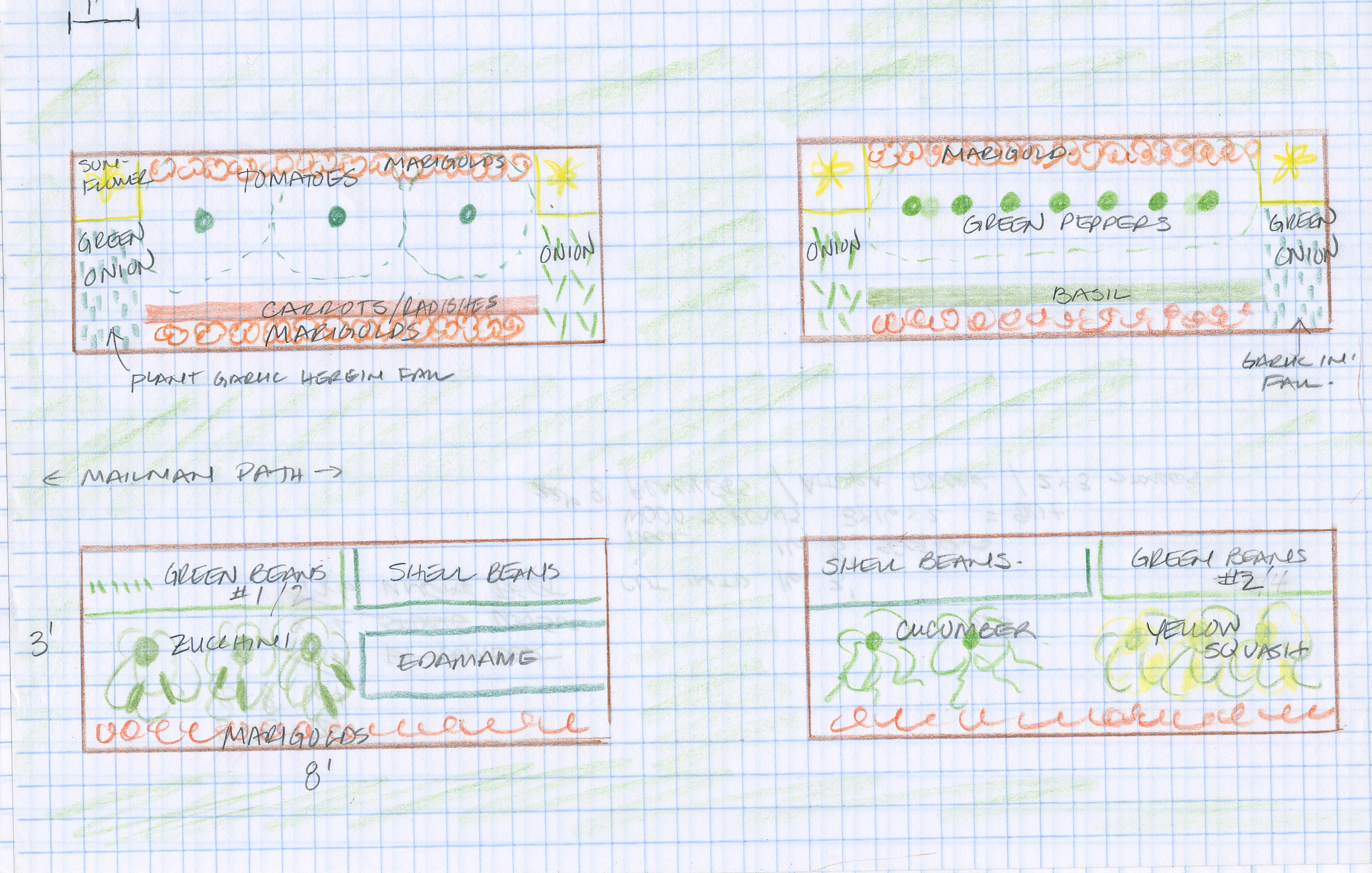I have met with a number of folks who use the following strategy to plant a garden: go to the nursery and buy some seeds, dig up some ground, throw the seeds out there, water, & wait and see what happens. I admit that I used the same strategy in my first few gardens years ago. It is not strategy for success.
If you bought a new house, had no living room furniture, and were going to go buy everything you wanted, wouldn't you at least measure the size of the living room before you left home? (It's always such a shame to have to dismantle the door frame because it's just a teeny bit too narrow for the sofa to fit through.)
Below are two sketches-- to scale!-- of two clients' gardens. There's a brief description of each. Their 'plans' included much more than the sketches.

This is a fairly elaborate garden. It is about 800 sq.ft. overall-- pretty big. The dark lines indicate either fences, walls or hard boundaries of gravel paths. This is the plan for early to mid-Spring (there's another for Summer). These folks do have experience, but they want a more productive garden, and one attractive to look at-- it's what they see from their kitchen windows. This space for the veggie garden naturally gives way to a perennial border (to the right). So without going into a lot of detail...
I first suggested that they add a bench and arbor at the end of the path, and add two focal points, the concentric circles.
From inside to out, each circle has a 24" diameter shallow pot that they will plant with "mixed greens", surrounded by a bed for lettuces, a path around the "salad bowls" and beds containing other spring greens, including chard.
In front of the salad bowl areas they'll plant brassicas-- cabbage family members, and soon after some dill.
The perimeter (in front and down the sides of the main path) are planted with an assortment of onions-- chives, red shallots, garlic chives, etc. Why? Because onions are natural companion plants. Lettuces and onions get along, too.
There's a plan as well for what to do when it gets too warm for the salad bowls to produce, and what to put where the rapini was when it's done. And so on.
All of this incorporates companion planting-- and some plants are NOT compatible-- and paths to navigate considering how much space each crop will eventually need, making use of the fence to trellis the peas. And so on.
Again, this is a large garden, the clients want a large variety of spring, summer and fall crops... .
Below is a sketch of the plan for a summer garden on a smaller scale.

This is the sketch of the plan for a raised bed garden. The raised beds don't exist yet, but will be constructed this month and be ready to plant later in April. This client has no gardening experience, but wants to learn, so we're starting small with just some tried and true veggies (o.k. some edamame for fun), and just enough to consume as the harvest comes in. (Although, he may freeze some peppers.)
There are four raised beds, each 3'x8', spaced 3' apart. This garden is in the front of a side lot that the mailman cuts through, so we need to leave plenty of space for him! As above, there's attention to companion planting, so we incorporate a lot of marigolds and a few sunflowers-- important too because it's in the front yard.
It's not complicated at all, but we have taken a number of things into consideration. He's not going to plant a whole packet of cucumber seeds, and two zucchini wil be plenty. He's going to plant green beans twice, about 2 weeks apart. As the season moves on, we'll plan on what to plant to extend the season-- maybe some fall crops-- and definitely some garlic for next spring.